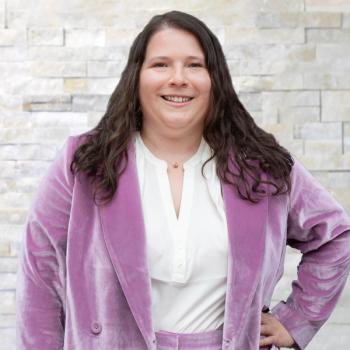
Using Raman and UV-vis Spectroscopy with Multivariate Regression Analysis to Improve Quality Control of Over-the-Counter Medications
A recent study examines how Raman spectroscopy and UV-vis spectroscopy can be used in the quality control of over-the-counter medications (OTCMs), ensuring their authenticity.
Over-the-counter medications (OTCMs) are an essential component to health care. They serve as the first attempt to treat symptoms related to numerous common illnesses, such as colds, fevers, and allergy-related ailments. Because OTCMs do not require a prescription to obtain, consumers have easier access to acquiring them.
However, this is a double-edged sword. Because OTCMs are popular and easily accessible, they are susceptible to fraud. Despite strict guidelines set by the U.S. Food and Drug Administration, bad actors still manage to get counterfeit OTCMs on the market (1). The counterfeit drugs not only mislead consumers, but they can also result in adverse health effects because of incorrect dosages or harmful ingredients.
A new study led by Sayo O. Fakayode and comprised of researchers from Georgia College and State University and Purdue University explored this topic in a recent study. Published in Spectrochimica Acta Part A: Molecular and Biomolecular Spectroscopy, the research addresses the growing global issue of counterfeit OTCMs, which pose serious health risks to consumers and introduces a quality control method that could significantly enhance the safety and authenticity of over-the-counter medications (OTCMs), particularly oral liquid syrups (1).
In the study, Fakayode and the team combined Raman and UV-visible spectroscopy with principal component analysis (PCA) and partial least square (PLS) regression. The team specifically focused on key active ingredients in these medications, including acetaminophen, guaifenesin, dextromethorphan HBr, and phenylephrine HCl, which are often found in flavored oral liquid syrups (1).
Using PCA and PLS regression, the study was able to quantify the concentrations of these active ingredients with high accuracy, ranging from 88% to 94% (1). The PLS method demonstrated good linearity with an R² value of over 0.9784, meaning the data model could predict outcomes with great accuracy (1). Additionally, the technique showed high sensitivity, detecting active components such as acetaminophen and guaifenesin at concentrations as low as 0.02 mg/mL (1).
The method demonstrated in this study demonstrated several key benefits. First, the method eliminated the need for sample extraction, which is typically a time-consuming and costly step in drug analysis (1). By analyzing the syrup formulations directly, the method offered a more efficient solution that can be scaled for in situ or field analyses. This is particularly useful for drug manufacturers and regulatory agencies that require robust quality control measures to detect counterfeits or ensure product consistency (1).
In the pharmaceutical industry, maintaining accurate multicomponent quantification of active ingredients is essential. Fakayode's study provides a powerful tool for this purpose. Raman and UV-visible spectral profiling are highly effective for monitoring the signal responses of both single and multicomponent analyte mixtures (1,2). PCA, a mathematical modeling technique, plays a crucial role in simplifying complex data sets by identifying patterns and reducing variables while maintaining the integrity of the original data (3). This allows for quick pattern recognition that might not be easily observed in large numerical data sets (1,3).
PLS regression, another statistical method used in the study, establishes mathematical relationships between the X variables (the independent variables or the spectral data), and the Y variables (the dependent variables or the concentration data). (1). This method enables researchers to draw more precise conclusions about the concentrations of active components in different syrup formulations (1).
The overarching goal of this research is to address some of the existing challenges in current quality assurance protocols for OTCMs. Fakayode’s method is not only rapid and cost-effective, but it also highly adaptable for real-world applications (1). As a result, the study highlights the practicality of using the combined Raman and UV-visible spectroscopy, PCA, and PLS regression techniques for the analysis of flavored oral syrups, which have identical matrices to the drug products sold in pharmacies.
References
- Fakayode, S. O.; Bolton, B.; Dassow, B.; et al. Rapid screening and multicomponent quantifications of active components of oral syrup over-the-counter medications by Raman and UV–visible spectroscopy and multivariate regression analysis. Spectrochimica Acta Part A: Mo. Biomol. Spectrosc. 2024, 305, 123447. DOI:
10.1016/j.saa.2023.123447 - Horiba Scientific, Raman Spectroscopy for Pharmaceutical. Horiba.com. Available at:
https://www.horiba.com/usa/scientific/products/raman-imaging-and-spectrometers/raman-application-corner/raman-spectroscopy-for-pharmaceutical/#:~:text=Raman%20spectroscopy%20plays%20a%20crucial,forms%2C%20and%20analyze%20drug%20formulations . (accessed 2024-10-08). - IBM, What is Principal Component Analysis (PCA)? IBM.com. Available at:
https://www.ibm.com/topics/principal-component-analysis#:~:text=What%20Is%20Principal%20Component%20Analysis,of%20variables%2C%20called%20principal%20components . (accessed 2024-10-08).
Newsletter
Get essential updates on the latest spectroscopy technologies, regulatory standards, and best practices—subscribe today to Spectroscopy.



